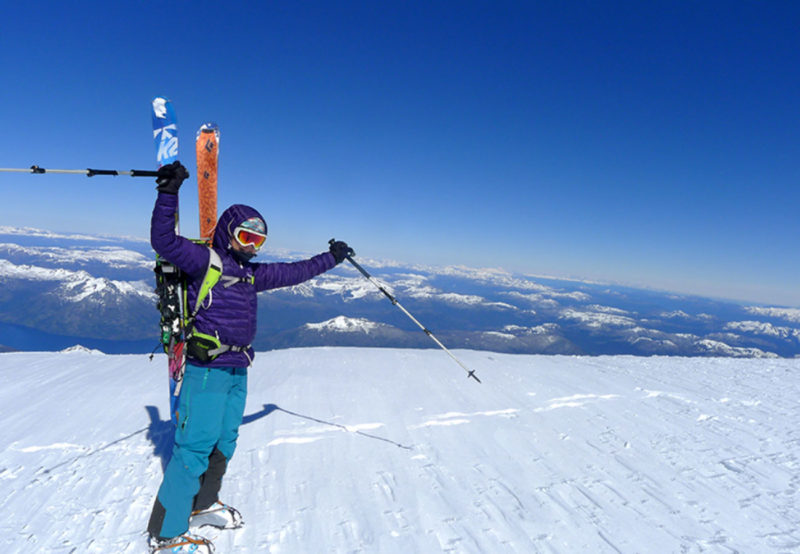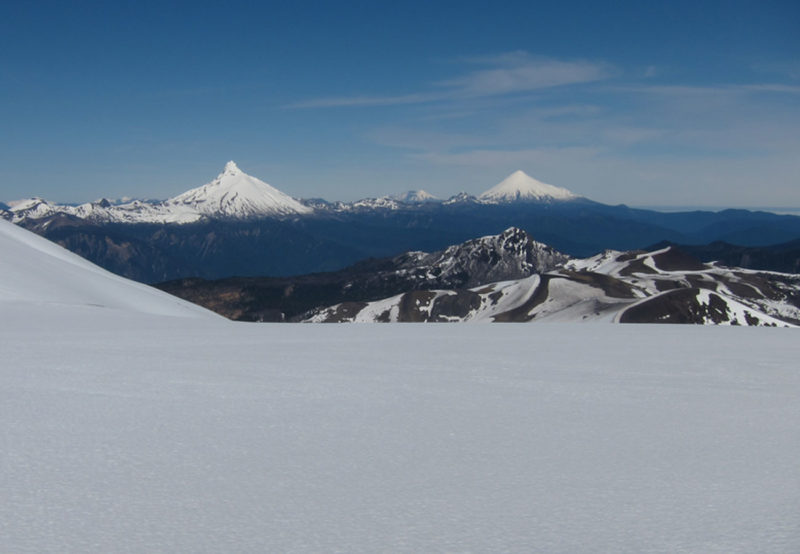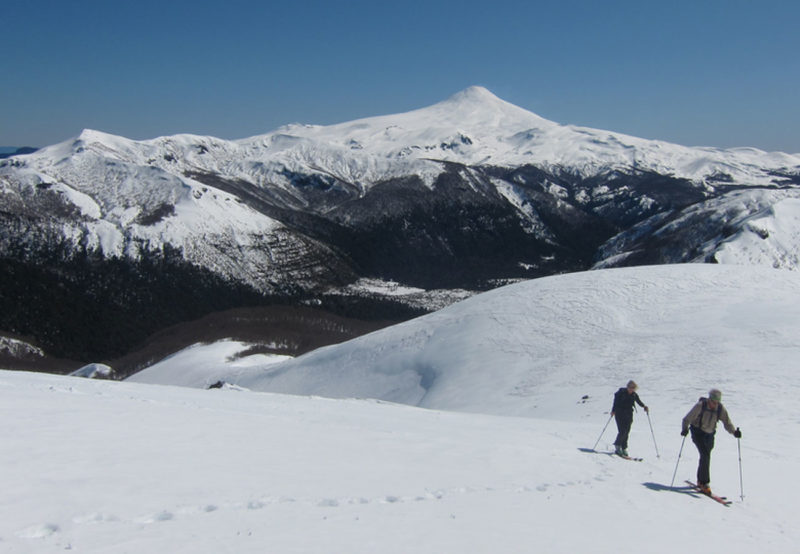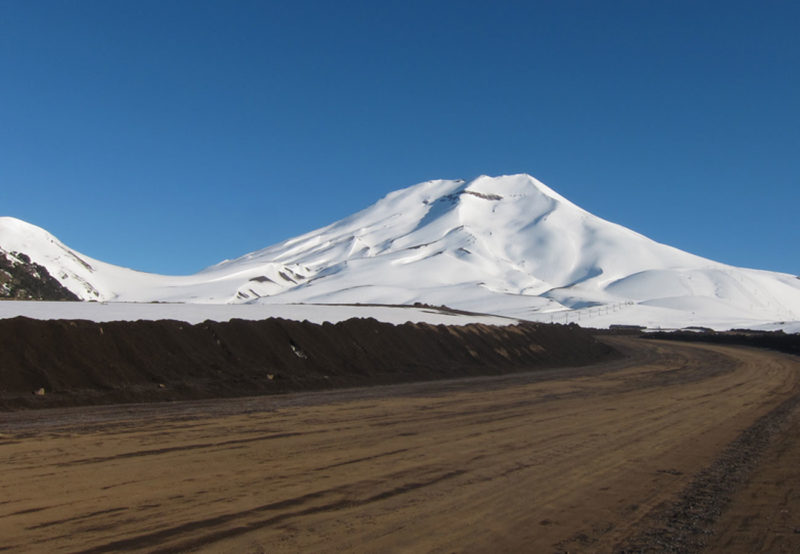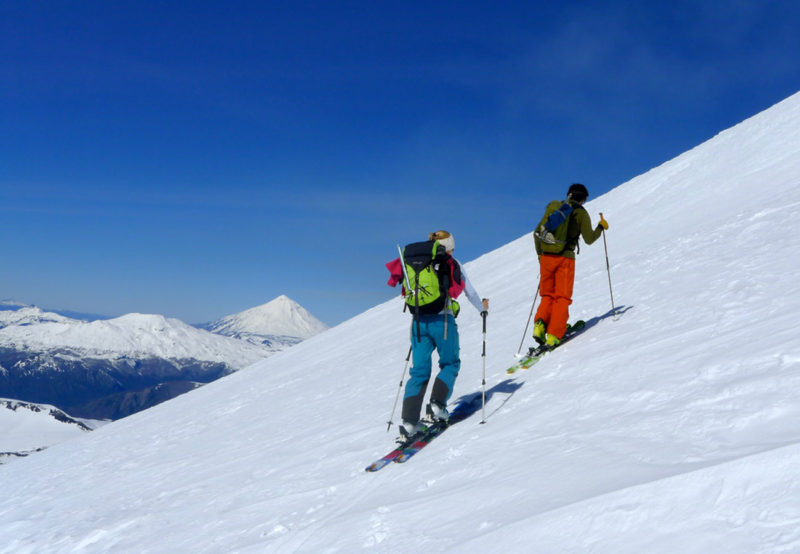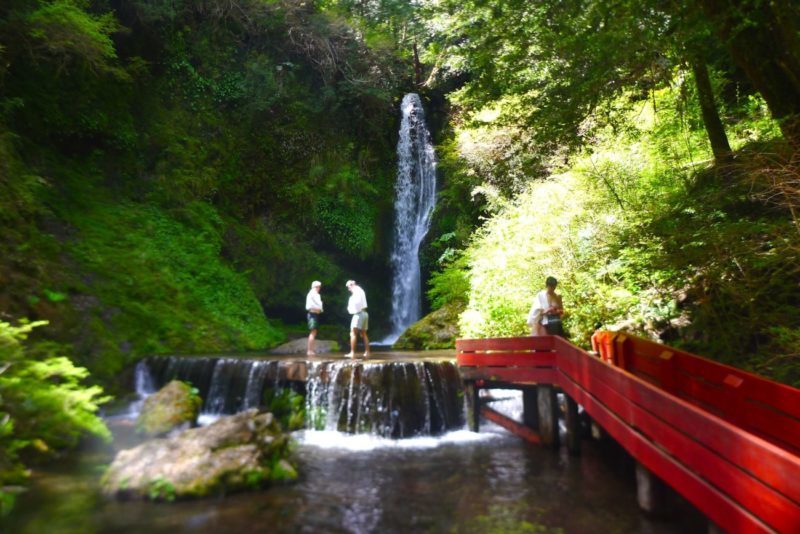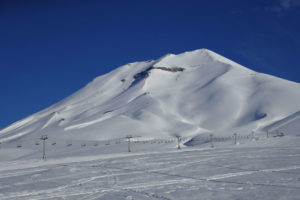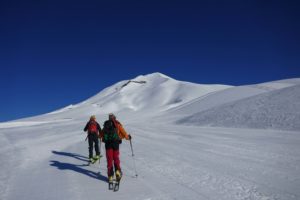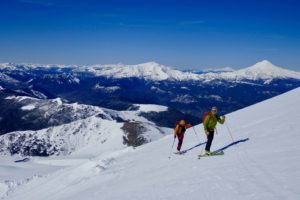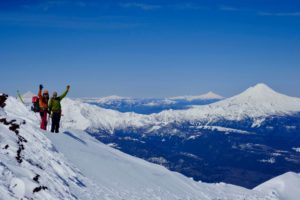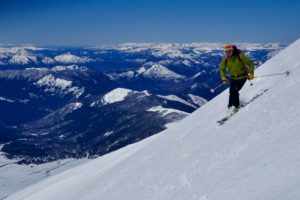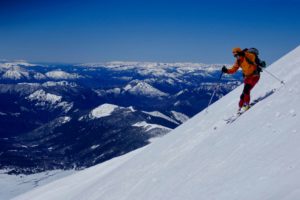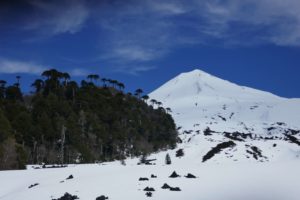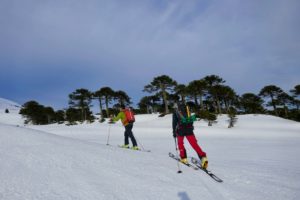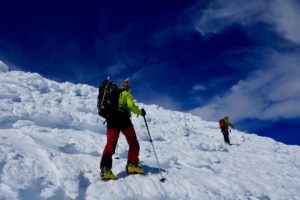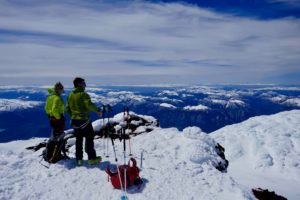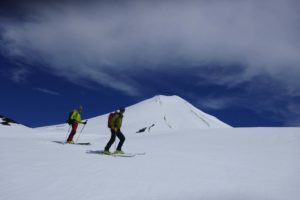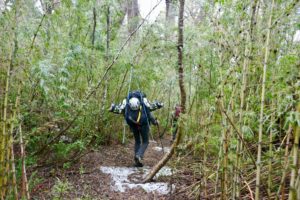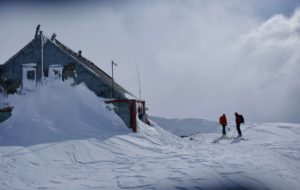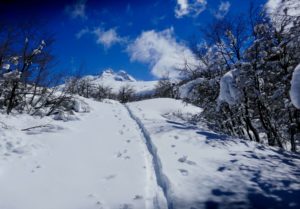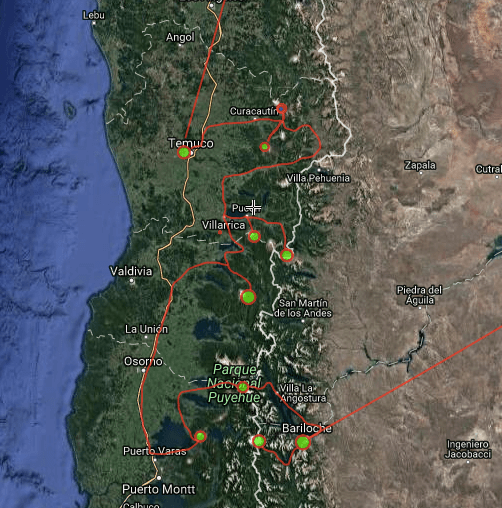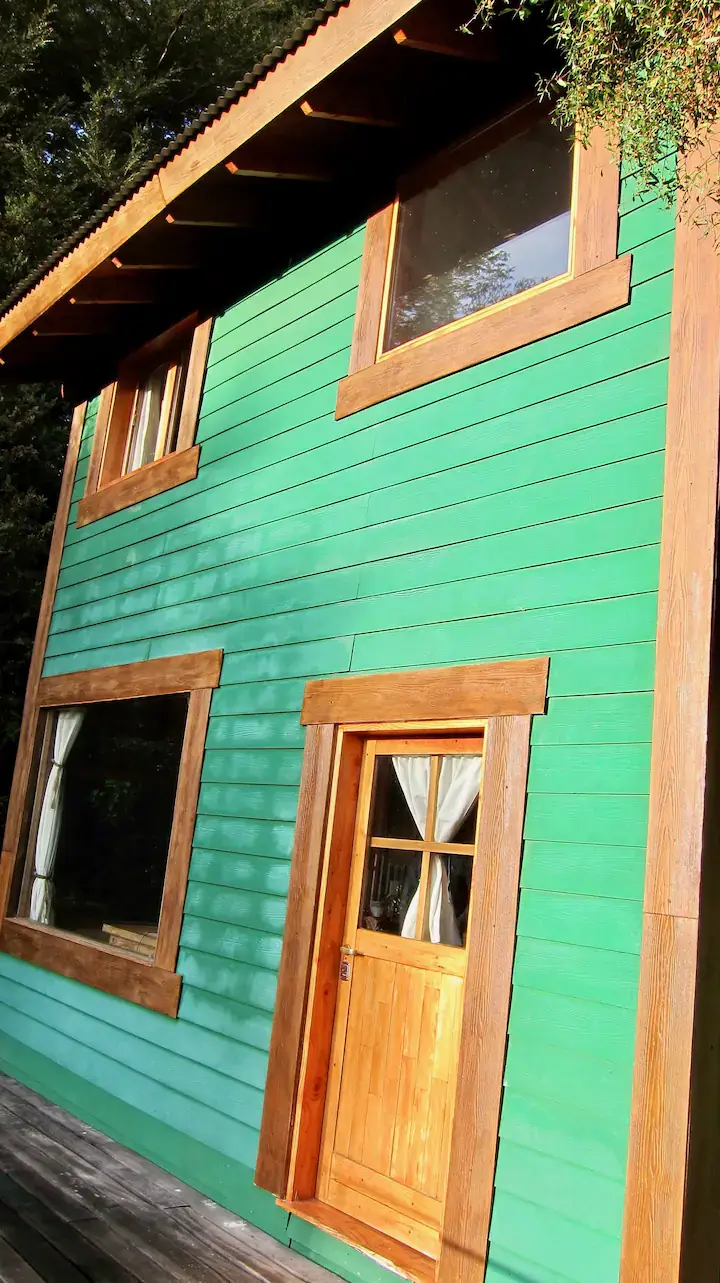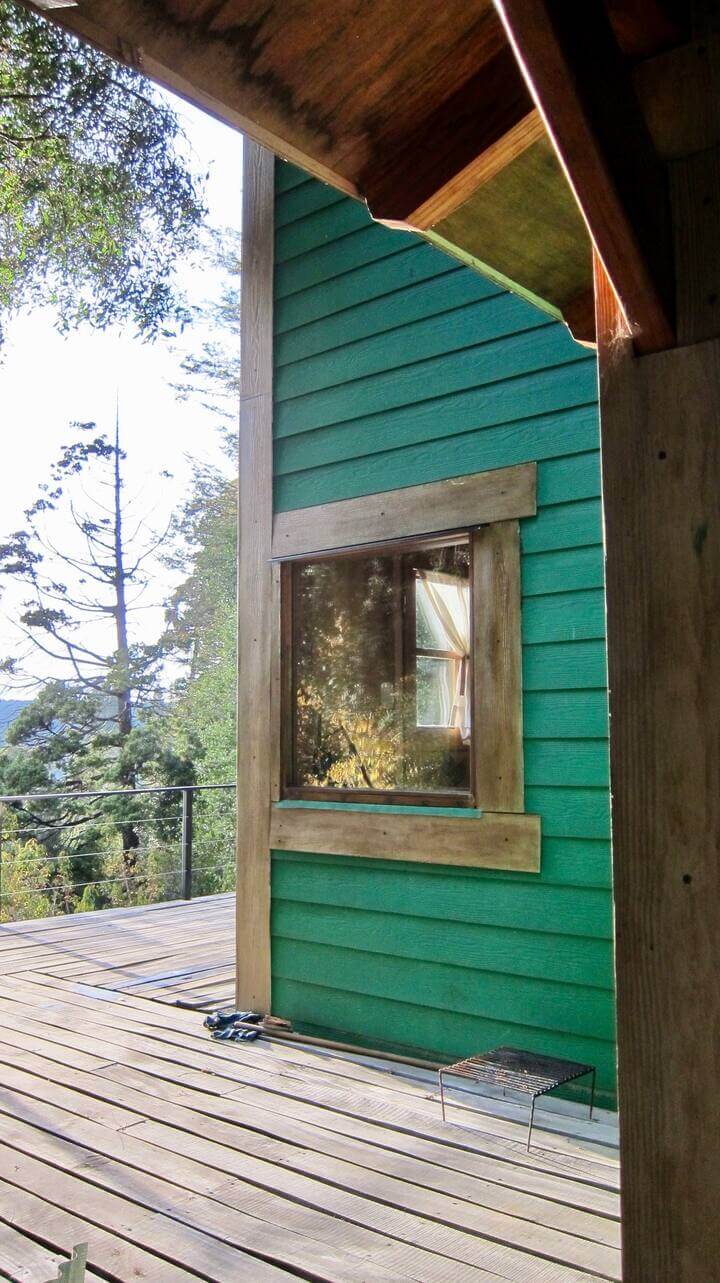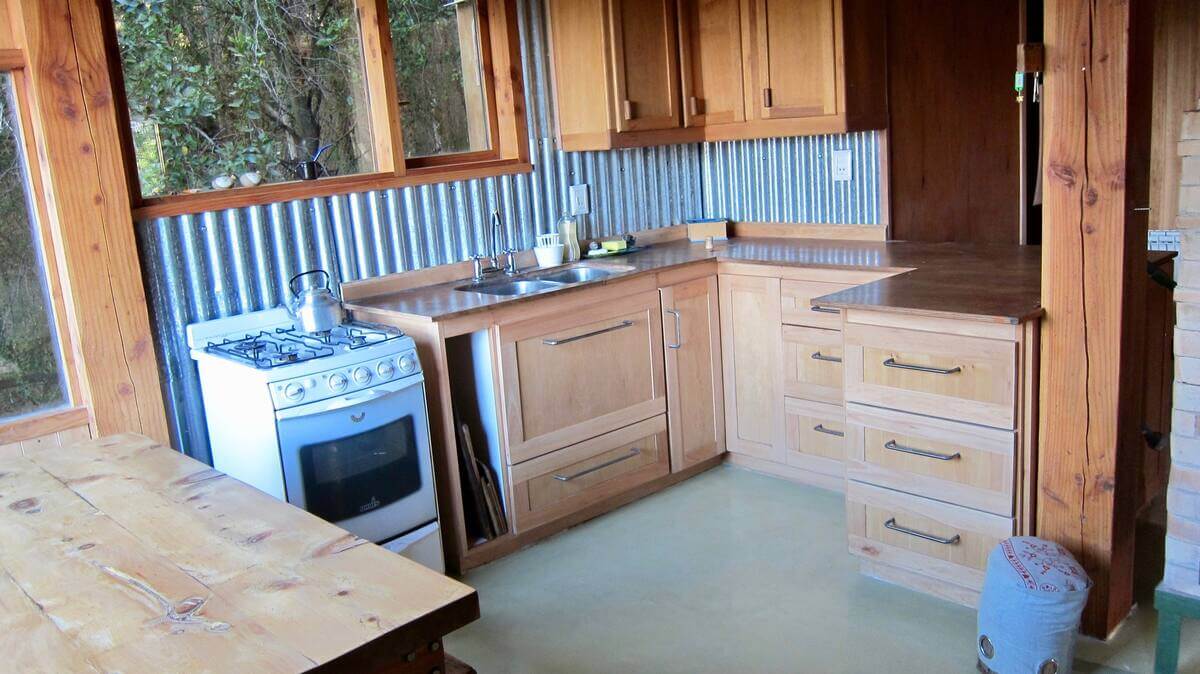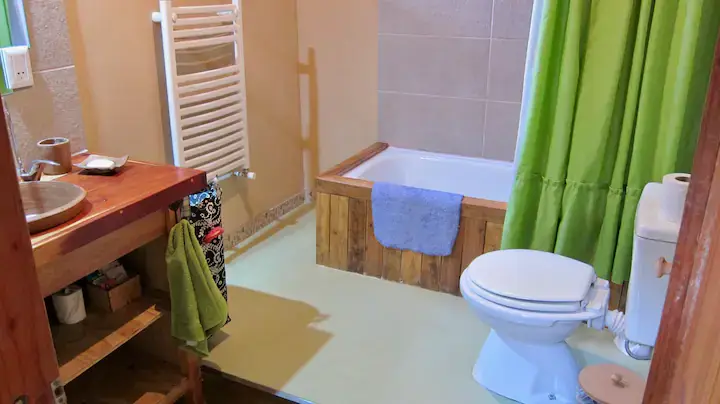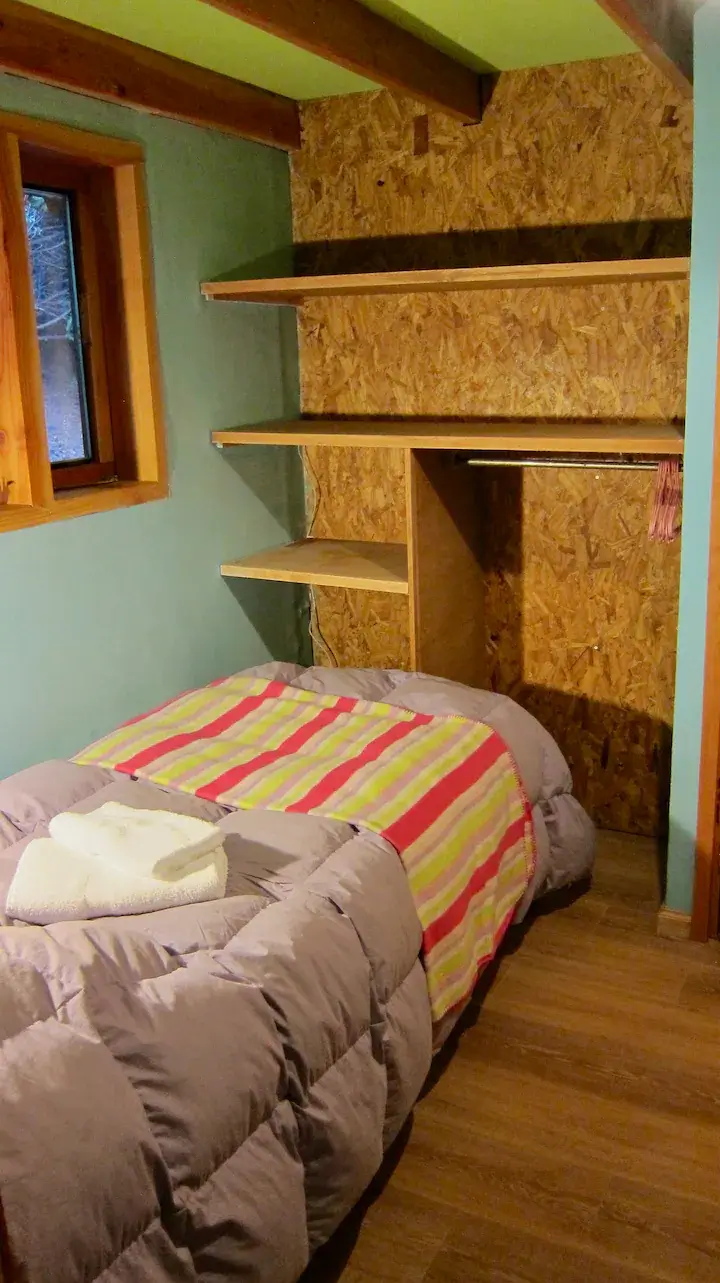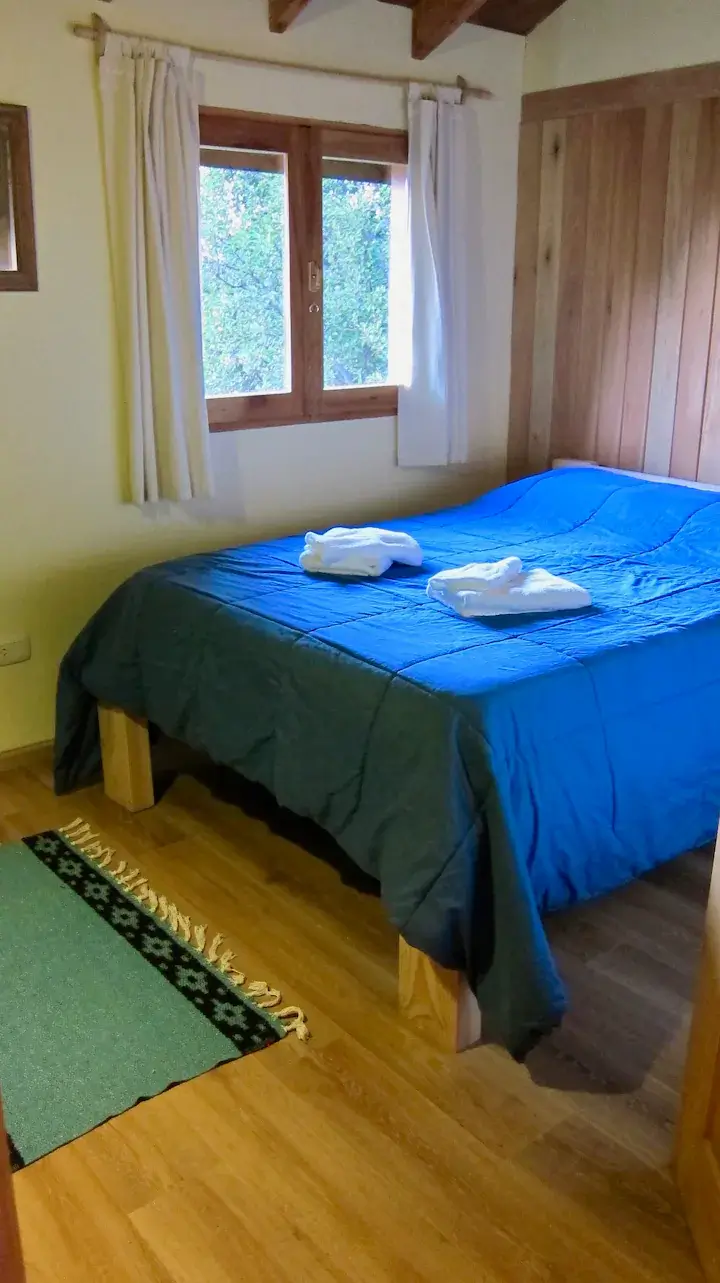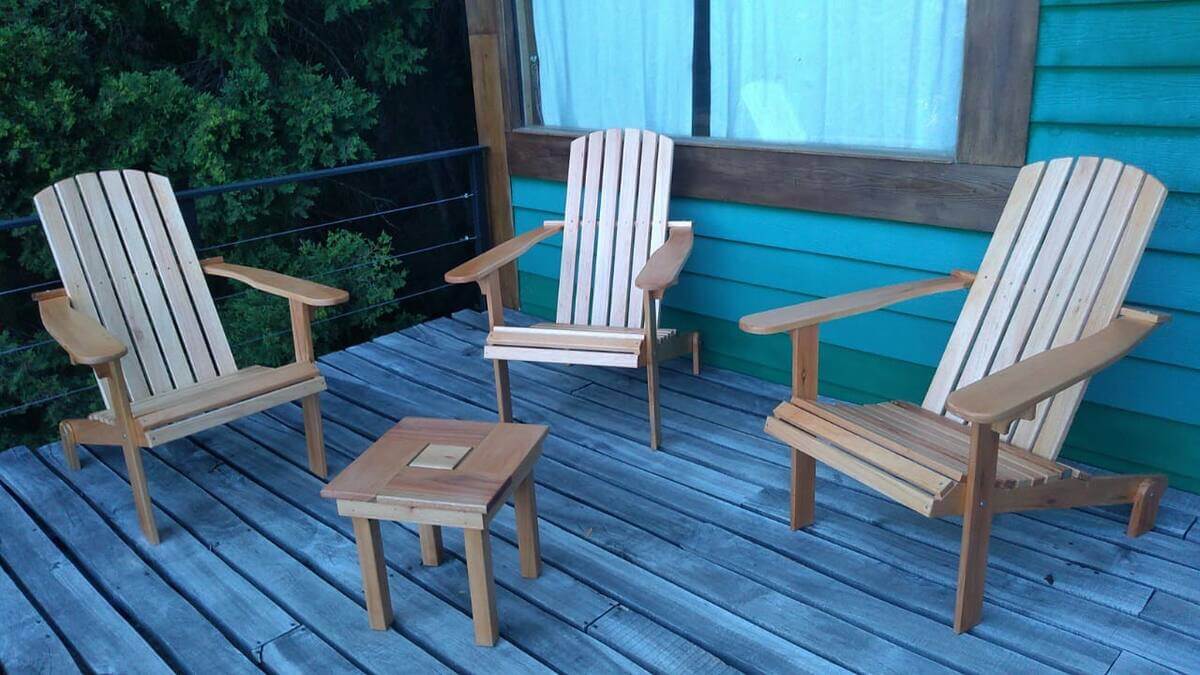Dates: September/October
Ski Chile and Argentina with us!
7-14 days programs available. Tailor made for you.
When the days start to get shorter in the northern hemisphere, spring is slowly waking up in Patagonia. For the ski touring fans this means corn and sometimes powder snow skiing under the south american sun. Some experts speak about the best spring skiing in the world.
All our ski touring goals between Bariloche and Temuco are between 2000 and 3000 meters high and no long acclimatization is necessary.
Our skiing adventure starts in Bariloche Argentina or in Temuco Chile airport and ends in either of both, depending on the itinerary you choose. We can offer a round trip or also a point to point trip. Bariloche is situated in the northern part of Argentina’s Patagonia in the Nahuel Huapi National Park. There are great ski touring options around the so called “Switzerland of south America” in the Patagonian Lake District. The incredible views down to the huge lakes and rainforests are stunning.
After the amazing volcano-skiing in Chiles “small south” where we ski volcanos like Casablanca, Osorno and Villarica we cross the boarder into Argentinas lake basin.
We choose those volcanos and mountains with the best conditions at the moment we are there. (There are about 10 volcanos to choose from).
Relax included
To relax between the tours, we take you to some of the worlds best hot springs in hidden valleys and eat great seafood as well as Argentine beef. Come join us on this exotic skiing adventure!
At a glance:
- 14 days / 13 nights in Chile & Argentina
- 8 volcanos
- 3 hot springs
Day to day itinerary, a program option that we like:
Day 1: Meet at Temuco airport – drive to Malalcahuello
Your mountain guide picks you up at the airport and drives you to the foot of the volcano Lonquimay.
- Night in Hotel Malalcahuello
Day 2: Skitour volcano Lonquimay 2865m
Our first volcano, Lonquimay is surrounded by very old Araucaria trees and is perfect for a start into the Volcano-tour.
- + 1365m
- Night in Hotel in Malalcahuello
Day 3: Skitour volcano Llaima 3125m
Llaima is one of the biggest volcanos in this area and stands in the Conguillio National park. It’s name means “the reawakened” in Mapuche language, the language of the local people.
- +1325m
- Night in Hotel Malalcahuello
Relaxing day
Day 4: Travel to Pucon and hot springs „Los Pozones“
We use this day to relax and reload our batteries. The Pozones hot springs is the perfect spot to relax and enjoy nature. Pucon is one of Chiles favorite outdoor destination, a small vibrant town on the foot of Villarica vulcano. We spend the evening and night here.
- Night in Hotel in Pucon
- Drive: 160km
Day 5: Skitour volcano Villarica 2847m
A short drive up into the Villarica national park. Today we will climb the 2847m high volcano Villarica.
The long ascend is very much worth it: a view in to the bubbling Magma in the crater and a great downhill run on the slopes up to 35° back down to the car.
- +1450m
- Night in Hotel Pucon
Hidden hot springs and more volcanos
Day 6: Hidden Hot Springs in the woods – Huilo Huilo Natural Reserve
A magical relax day! This natural hot springs have an idyllic setting between the mountains. There are several pools with varying temperature for personal selection. The setting is very natural and quiet. After soaking our muscles we continue the drive into the Huilo Huilo natural reserve where we can discover the Valdivian rainforest.
- Night in Hotel in the Huilo Huilo Nature Reserve
Day 7: Skitour volcano Choshuenco 2300m, travel south to Llanquihue lake
The Mocho-Choshuenco volcano lies directly behind our Hotel, we cross the Huilo Huilo river with it’s clear blue water and skin up trough the rain forest to the top of this twin volcano.
After the tour we drive down south into Chiles Lake District and to the beautiful Llanquihue.
- +1000m
- Night in Hotel in Puerto Varas
Day 8: Skitour volcano Osorno 2650m – Antillanca hot springs
Maybe the most perfect conical shaped volcano on the tour. We reach it after a short drive around Llanquihue lake, Chiles biggest sweet water lake. From the top we will be able to overlook the whole lake basin and all the way to the Fjords near Puerto Montt. A short drive brings us to Antillanca and it’s hot springs near the Argentine boarder.
- +1300m
- Night in Hotel in Antillanca
Volcanos Casablanca and Puyehue
Day 9: Volcano Casablanca 2050m
Casablanca or the whit house is our last volcano in Chile. Easy to reach from the Antillanca ski area.
In the afternoon we drive over the Samore pass and the boarder line into Argentina down to the Nahuel Heap National Park
- +900m
- Night in Hotel in Puyehue
Day 10: Refugio Puyehue, 1450m
We walk up to Refugio Puyehue trough thick Valdivian rainforest.
- +1000m
- Night at Refugio Puyehue
Day 11: Volcano Puyehue, 2240m
Skitour up to Volcano Puyehue where we’ll be able to overlook the huge crater. Ski back down.
- Night in Hotel in Puyehue
Day 12: Travel day to Bariloche, Argentina
We drive over the boarder into Argentina today and enjoy a relaxing afternoon in Bariloche.
- Night in Bariloche
Cerro Tronador
Day 13: Skitour Refugio Meiling, 2000m
We hike up to Refugio Meiling from the hamlet of Pampa Linda. It takes a 1.5hr drive from Bariloche trough the Nahuel Huapi National Park and along the pale blue Gutierrez and Mascardi lakes.
We first hike trough a forest and skin up reaching the hut at the foot of the glacier.
- +1000m
- Night at Refugio Meiling, 2000m
Day 14: Skitour Cerro Tronador 3200m, Back to Bariloche
We start early this morning after a breakfast at the hut. We skin up over big, wide glaciers to the Blanco Pass. The last part to the summit gets a bit steeper, but no climbing techniques are required.
Ready for an unforgettable ski run down?
- +1200m
- Night and farewell dinner in Bariloche
(Itinerary will be adapted to weather and snow conditions if needed.)
Price per skier in Swiss Francs:
- With 2 skiers: 5690.- CHF
- With 3 skiers: 5184.- CHF
- With 4 skiers: 4161.- CHF
Included in the price:
- Organisation, UIAGM – IFMGA mountain guide, private ground transportation, 11 accommodations in hotels in double rooms, 2 nights at mountain huts, breakfasts, dinners, lunches
Not included in the price:
- Personal insurances (accident, cancelation, travel etc.), thermal bath entries, drinks, flights, personal equipment
- Please contact us for programs and prices tailored to your wishes!
How to get to to Bariloche, Argentina
- Take a 2 hours flight from Buenos Aires, the capital of Argentina.
How to get to Temuco, Chile
- Take a 2 hours flight from Santiago de Chile, the capital of Chile.
Map with all the volcanos and our route
Wonderful private house in Bariloche
Are you looking for the perfect place to relax a couple of days after your tour? We offer this wonderful, quiet house in the forest. You can book trough Airbnb or directly with us:
Geography and History of Patagonia
Patagonia is the scene of the world’s great adventures. Even if you know little of the place, the name itself inhabits our subconscious, whispering of an unknown finger of the earth, el fin del mundo. You picture large silent spaces and windblown solitude.
The first Europeans to lay eyes on this landscape were led by Ferdinand Magellan, who pioneered passage trough the treacherous strait that now bears his name. His expedition named the mainland “Tierra de los Patagones” unwittingly spawning the myth of a race of Patagonian giants.
The Pampa
To the east of the Patagonian Andes, the pampa is an immense desert, by some accounts among the five largest deserts in the world. West of the Andes is another world. Here both the Central Valley and the Coast Range have sunk into the Pacific; what were once glacial valleys are now fjords, and what were once mountaintops ar now islands. Hotsprings lay revealed by coastal erosion while great glaciers further fragment the landscape, necessitating maritime or air travel. Great forests cloak the Andes from the Pacific shoreline to the continental divide, bisected by surging emerald rivers carrying glacial silt to the sea and providing habitat for fearless trout and salmon.
Travel Blog
A ski trip to the Lake District of Chile & Argentina
“Snow-white perfect volcanoes… strung together like a string of pearls.”
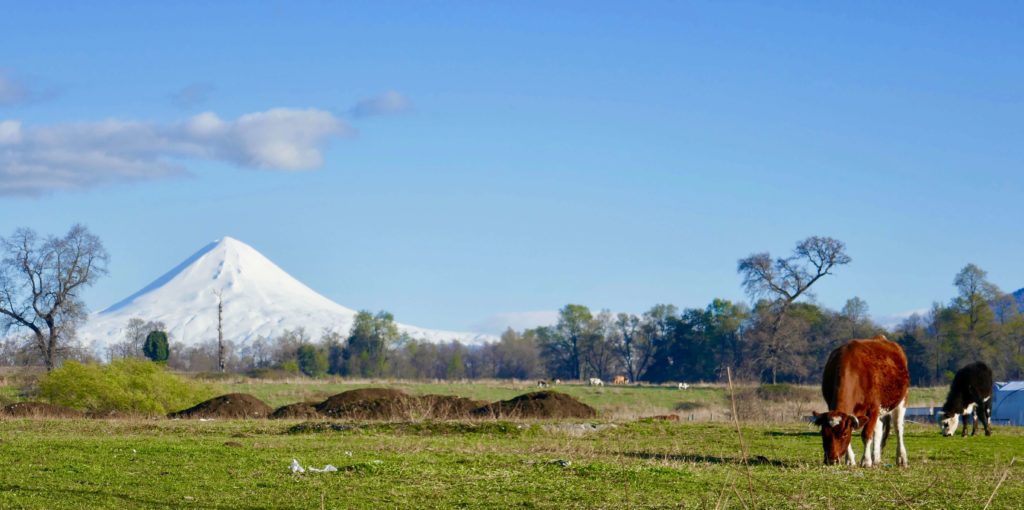
The firehouses of the Mapuche Indians – The ring of fire
Volcanoes have always fascinated me. If they are also suitable for skiing and produce hot thermal water, they offer a perfect experience. In the Chilean-Argentine Lake District there are about twenty volcanoes that form part of the Pacific Ring of Fire. The snow-white volcanoes, perfectly conical in shape, are a string of pearls. They tower high above the green meadows, primeval forests and crystal-clear rivers.
The lolak Mapuche Indians called them Pillan or “firehouses”. Pillan is the name for a powerful, extraordinary, powerful and sinister appearance. Even today they still try to conjure up the spirits in the volcanoes with the help of ancient rituals.
Mapuche people
The Mapuche are considered to be the worst-humoured, proudest Indians in South America.
In December 1553, at the Battle of Tucapel, they brought a first terrible defeat to the conquistadors who were accustomed to victory. The greedy Spanish governor of Chile, Pedro de Valdivia, is said to have been
in battle. Rumour has it that the Mapuche poured glowing liquid gold into his throat. Also in the following time the Indians successfully prevented a further colonization of Chile. The ongoing resistance of the indigenous people was so successful that in 1641 the Spanish had to recognise the Mapuche nation as an independent territory in a treaty, a unique process in the history of South America. So the persistently bad mood for the Mapuche paid off. Unlike most Indian peoples, they survived colonization.
Temuco
In Temuco, where volcanic forces have created fascinating lunar landscapes over thousands of years, where remote mountain lakes glow and thermal springs gush, where thousand-year-old primeval forests with araucaria and southern beeches have been preserved – this is where our ski tours begin.
Volcano Lonquimay, 2865M
At the foot of the Lonquimay volcano we spend the night in a quiet lodge. The next morning we drive to the ski resort of Corralco, and put the skins on our skis. The Lonquimay with its 2865m is the perfect entry mountain into our ski adventure.
After an ascent of 1362m we stand on its ridge and enjoy the wonderful view of the surrounding volcanoes. We can already have a look at the volcano Llaima, our summit destination tomorrow. In the afternoon we enjoy the warm spring sun in the garden of our lodge. The neighbours invite us for a typical dinner. We can try the yellow Llao Llao mushrooms, which grow on the native Andean beeches, pasta from the nuts of the Araucaria and fresh trout from the river.
Volcano Llaima, 3125M
The next morning we drive into the Conguigilo National Park on a bumpy natural road, freshly strengthened. The snow line is exactly at our starting point and so we can start with the skins from the car. Through the lively araucaria trees we go up to the steeper slopes of the Llaimas. It is one of the highest and most active volcanoes in the area. We deposit the skis 300m below the summit and climb the last meters with crampons. Again and again it steams from holes filled with avalanche stones. A bizarre contrast to the frozen snow through which we find our way to the summit. Also on the summit there is a mixture of ice and warm, steaming avalanche stones in all colours.
A great descent brings us back down to our pick-up. A cold beer which we put in the lagoon tastes very good.
Drive to Pucon
We drive around the Llaima and after a three-hour drive in the south through forests, small villages and green meadows we reach the big Villarica lake. On its southern shore lies the volcano Villarica which proudly watches over the area.
We spend the night in the small town of Pucon, the Chilean outdoor Mecca par excellence. A paradise for hiking, rafting, biking. There is a lot going on in the main street with all the restaurants and cafes. We enjoy a nice dinner with Sopa y Pilla, the typical salty pastry as Appetizer and Carmenére wine from a winery near Santiago de Chile.
Hot springs
If in Pucon then you have to treat yourself to a day in one of the surrounding thermal baths. We drive on the east side of the Villarica to the Geometricas baths. These are beautifully located, hidden in a small valley. Red wooden walkways lead to the numerous pools with water temperatures between freezing cold and 39C. Large, green Nalcabättern, a kind of wild rhubarb decorate the slopes and slowly but surely the tired muscles recover.
Villarica Volcano, 2847M
A layer of fog covers the valley floor around Pucon. All the more we are drawn up into the sky. Also the Bandurria birds (Ibis) with their loud screeching help us to exchange the bed for the ski touring skis. As hoped, we quickly get out of the fog. A huge sea of fog lies below us. Pucon also has a small ski area from which the tour to the volcano can be started.
The Villarica offers a very special spectacle. Already on its steep summit flank a wave of stinking eggs rises from time to time in the nose. We’ll soon find out where these smells come from. A huge crater opens and we can even observe the red, bubbling Lawa in its throat. The descent from 1400m offers some ice above, then hard powder and beautiful spring snow below.
A Legend
A legend explains why volcano Lanin is extinct: The god of the volcanoes Pillan, sign of the evil has become angry, because the boys Huaiquimil Indians Huemules, Andes stags would have hunted. He made the volcano Lawa spit ashes and stones over the landscape. The volcano could only be reassured when Huilefun, the prisoner’s pretty daughter, was sacrificed to it. So they brought the Indians to a sacrificial stone where they were immediately recited by a large condor and thrown into the crater. From this moment on the volcano has calmed down, its fires are extinguished and Huemules may not be hunted any more…
Argentina, Volcano Tronador 3187m
When rain is announced in Chile, it is often worthwhile to change to the Argentinean sides of the Andes. So also this time. Through dry steppe landscape we drive into the so-called Switzerland of Argentina, to Bariloche. The little town is situated at the big Nahuel Huapi Lake and is very popular with tourists and athletes from all over the world thanks to its beautiful landscape.
To really dive into the Gaucho world we test ourselves the next day on horseback on a ride on an estancia. We are invited by the Estancieros to a fine Asado with delicious beef, Empanadas and Malbec wine. An extensive siesta and we are ready for tomorrow’s ascent to Refugio Meiling at Cerro Tronador.
Ascent to Pampa Linda
In the Pampa Linda, the beautiful Pampa, our ascent begins through an impressive forest with huge Coihues trees. In about 4 hours we arrive at the Refugio. Lorena has already heated up and brewed coffee. She cooks a delicious lentil stew while it blows and snows outside. The strong winds shake the hut all night long. It only remains to hope that tomorrow it will be calmer. We almost overslept, no sound can be heard and the sun slowly rises in the distance. A splendid day without clouds and wind!
To the top
Federico, our local IVBV mountain guide from Patagoniatiptop, will take you up to the pass between the Pico Argentino and the Pico Internacional. The extinct volcano has 3 peaks. Our destination is Argentina, the Pico Chilene in Chile and the International, as the name suggests, right on the border.
From the pass it goes steeply up with a short, easy climbing tour in the second degree at the very end. It’s great to be up here. If our guests had more time, we could add some more volcanoes to the program. We see the volcanoes Osorno, Puntiagudo, Puyehue which erupted in 2011 and Casablanca. All are great ski touring mountains.
After the descent and a short descent we drive through the Nahuel Huapi National Park back to Bariloche. Our guests from Switzerland fly back home in the morning.
Arrival:
The tour can be made as a round trip from/to Bariloche or as an Andes traverse from Temuco, Chile to Bariloche, Argentina or vice versa. The airport of Temuco can be reached with a domestic flight from Santiago de Chile, that of Bariloche with a two-hour flight from Buenos Aires.
Best time to go ski touring:
Early September to mid October are ideal for ski tours on the volcanoes. The days are longer and the climate is comparable to March/April in the northern hemisphere. Down in the valleys it is already pleasantly warm and often the slopes of the volcanoes offer perfect firn conditions. As in the Alps, it can snow in spring. The volcanoes often surprise you with powder snow.
Program suggestions:
Flexibility is the magic word for a good ski tour program in this area. Depending on the weather, it can be very valuable to switch quickly from one side of the Andes to the other. Weather and conditions can vary greatly. We like to keep our programs flexible so that our guests can enjoy the best descents.
Personal requirements:
Daily ascents from 1200-1800m should be mastered. On some volcanoes you have to climb the top with crampons. Experience is required. Downhill runs in all kinds of snow with up to 40 degrees should not be a problem.
Author:
Ella Alpiger, Swiss hiking guide and snow sports teacher, owner Patagoniatiptop GmbH. For over 10 years I have been travelling back and forth between Patagonia and the Alps and have been able to turn my dream into my profession.

